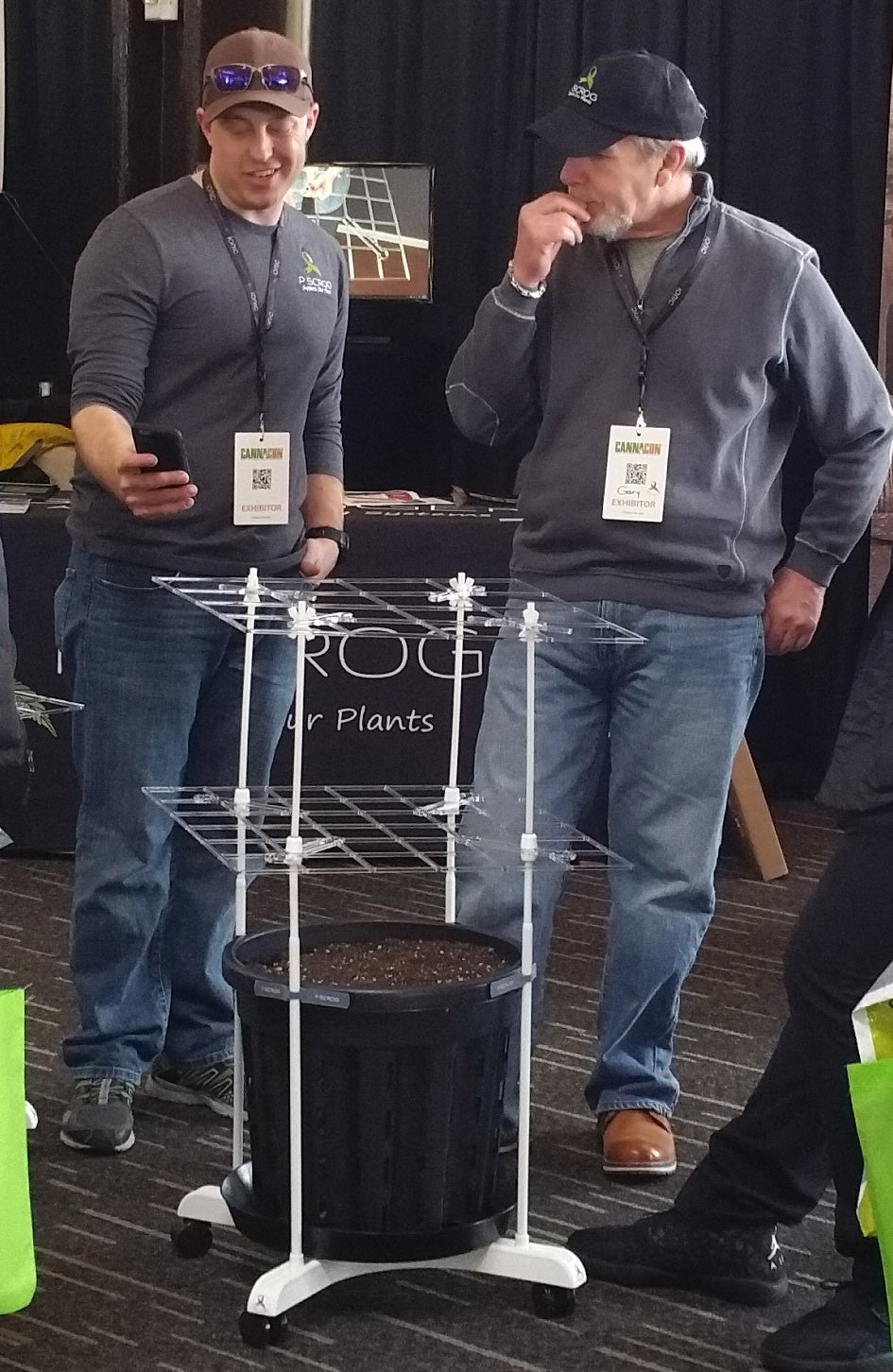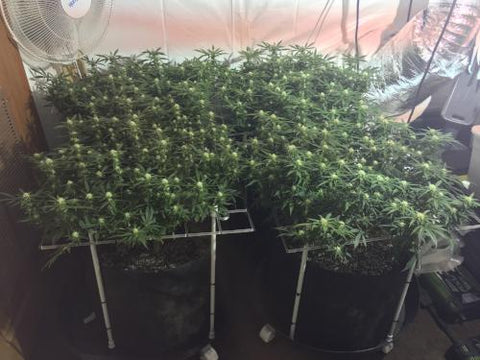ScrOG blOG™

The Denver Defoliator
Mike didn't seem like the abusive type when I first met him at Indo Expo in Denver. ...until he showed me what he does to his plants!!
It takes about 3 days for the untouched little leaves to sprout out and create a full canopy again. I was told that this is merely because of the plant's need for photosynthesis and a need for a leaf to be at the site, It understands when you've pruned it. The plant thinks, "man we don't have much capacity to to do our solar photosynthesis so we need to push out a new set of leaves" and in that way it kind of forces a quick new growth and it bounces back healthier when you knock it down a little bit.

Gary - How often do you defoliate during a plants life cycle?
Gary - Just about everything we do to a plant we do to increase the yield. I would assume that is the same goal with defoliation. Since the end goal is to increase yield you must really believe in the technique.
Gary - Is everything below the screen kept clean? I know you use the P SCROG. How does defoliation work with the P SCROG?
Mike - Everything below the screen is clean for sure.


P SCROG Kits
or
SupportOurPlants@SCROGGER.com

Is 4/20 becoming a "Hallmark Holiday"?

The actual term 4/20, started in the 70’s with a group of high school kids dubbed the Waldos as a code word to meet. Now 4/20 is seen as the cannabis industry sale day and soon, probably in the not too distant future Hallmark, Blue Mountain and JibJab will be making 4 20 cards that you send off to your friends, buddies and allies to commemorate this recognized industry holiday.
So wherever you are on this wonderful day, have a Happy 4/20 from all of us at SCROGGER!


P SCROG Kits
or
SupportOurPlants@SCROGGER.com

Double yield for $5
The general properties can be summarized as follows:
- excellent physical properties
- excellent toughness
- very good heat resistance
-
good chemical resistance
-
electrical resistance
- transparent
- horticulture friendly
The following diagram compares the impact strength of polycarbonate to other common polymers.


or
SupportOurPlants@SCROGGER.com

Top or FIM?



or
SupportOurPlants@SCROGGER.com

Okanogan Sunflower Farm

Like his great grandfather during the Gold Rush, Terry is in the midst of the "Green Rush" frenzy with his 28 acre Okanogan Sunflower Farm and "Okanogan Gold" cannabis brand of bud and extracts. "We can still pan for gold in the Okanogan River which is used for irrigation at the farm", says Terry. "We are located in north central Washington where the mountains meet the desert. This region and its micro climate are ideal for growing high grade cannabis plants."

Hear Terry explain his cannabis operation in the YouTube video shot at the Okanogan Sunflower Farm, why he feels all plants should be ScrOGged and his predictions for the future of the cannabis industry. The drone footage is incredible. Please watch!

P SCROG Kits
or
SupportOurPlants@SCROGGER.com
- Gary Memelstein
- Tags: cannabis plant training growing cannabis how to scrog indoor grow indoor growing lollipopping low stress training lst outdoor grow screen of green scrog scrog kit scrog kits scrog marijuana scrog method scrog net scrog pot plants scrog screen scrog weed scrogging topping trellis trellis net




